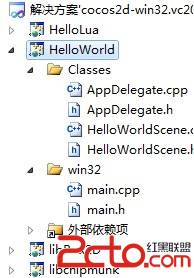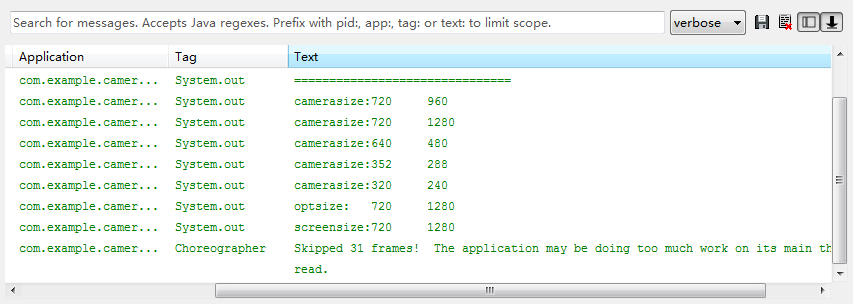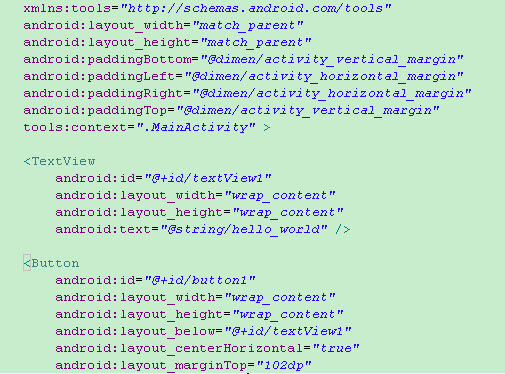IOS使用易做图(多核编程)
什么是易做图
Grand Central Dispatch (易做图)是Apple开发的一个多核编程的解决方法。该方法在Mac OS X 10.6雪豹中首次推出,并随后被引入到了iOS4.0中。易做图是一个替代诸如NSThread, NSOperationQueue, NSInvocationOperation等技术的很高效和强大的技术,它看起来象就其它语言的闭包(Closure)一样,但苹果把它叫做blocks。
应用举例
让我们来看一个编程场景。我们要在iphone上做一个下载网页的功能,该功能非常简单,就是在iphone上放置一个按钮,点击该按钮时,显示一个转动的圆圈,表示正在进行下载,下载完成之后,将内容加载到界面上的一个文本控件中。
不用易做图前
虽然功能简单,但是我们必须把下载过程放到后台线程中,否则会阻塞UI线程显示。所以,如果不用易做图, 我们需要写如下3个方法:
someClick 方法是点击按钮后的代码,可以看到我们用NSInvocationOperation建了一个后台线程,并且放到NSOperationQueue中。后台线程执行download方法。
download 方法处理下载网页的逻辑。下载完成后用performSelectorOnMainThread执行download_completed 方法。
download_completed 进行clear up的工作,并把下载的内容显示到文本控件中。
这3个方法的代码如下。可以看到,虽然 开始下载 -> 下载中 -> 下载完成 这3个步骤是整个功能的三步。但是它们却被切分成了3块。他们之间因为是3个方法,所以还需要传递数据参数。如果是复杂的应用,数据参数很可能就不象本例子中的NSString那么简单了,另外,下载可能放到Model的类中来做,而界面的控制放到View Controller层来做,这使得本来就分开的代码变得更加散落。代码的可读性大大降低。
[cpp]
static NSOperationQueue * queue;
- (IBAction)someClick:(id)sender {
self.indicator.hidden = NO;
[self.indicator startAnimating];
queue = [[NSOperationQueue alloc] init];
NSInvocationOperation * op = [[[NSInvocationOperation alloc] initWithTarget:self selector:@selector(download) object:nil] autorelease];
[queue addOperation:op];
}
- (void)download {
NSURL * url = [NSURL URLWithString:@"http://www.youdao.com"];
NSError * error;
NSString * data = [NSString stringWithContentsOfURL:url encoding:NSUTF8StringEncoding error:&error];
if (data != nil) {
[self performSelectorOnMainThread:@selector(download_completed:) withObject:data waitUntilDone:NO];
} else {
NSLog(@"error when download:%@", error);
[queue release];
}
}
- (void) download_completed:(NSString *) data {
NSLog(@"call back");
[self.indicator stopAnimating];
self.indicator.hidden = YES;
self.content.text = data;
[queue release];
}
static NSOperationQueue * queue;
- (IBAction)someClick:(id)sender {
self.indicator.hidden = NO;
[self.indicator startAnimating];
queue = [[NSOperationQueue alloc] init];
NSInvocationOperation * op = [[[NSInvocationOperation alloc] initWithTarget:self selector:@selector(download) object:nil] autorelease];
[queue addOperation:op];
}
- (void)download {
NSURL * url = [NSURL URLWithString:@"http://www.youdao.com"];
NSError * error;
NSString * data = [NSString stringWithContentsOfURL:url encoding:NSUTF8StringEncoding error:&error];
if (data != nil) {
[self performSelectorOnMainThread:@selector(download_completed:) withObject:data waitUntilDone:NO];
} else {
NSLog(@"error when download:%@", error);
[queue release];
}
}
- (void) download_completed:(NSString *) data {
NSLog(@"call back");
[self.indicator stopAnimating];
self.indicator.hidden = YES;
self.content.text = data;
[queue release];
}
使用易做图后
如果使用易做图,以上3个方法都可以放到一起,如下所示:
[cpp]
// 原代码块一
self.indicator.hidden = NO;
[self.indicator startAnimating];
dispatch_async(dispatch_get_global_queue(DISPATCH_QUEUE_PRIORITY_DEFAULT, 0), ^{
// 原代码块二
NSURL * url = [NSURL URLWithString:@"http://www.youdao.com"];
NSError * error;
NSString * data = [NSString stringWithContentsOfURL:url encoding:NSUTF8StringEncoding error:&error];
if (data != nil) {
// 原代码块三
dispatch_async(dispatch_get_main_queue(), ^{
[self.indicator stopAnimating];
self.indicator.hidden = YES;
self.content.text = data;
});
} else {
NSLog(@"error when download:%@", error);
}
});
// 原代码块一
self.indicator.hidden = NO;
[self.indicator startAnimating];
dispatch_async(dispatch_get_global_queue(DISPATCH_QUEUE_PRIORITY_DEFAULT, 0), ^{
// 原代码块二
NSURL * url = [NSURL URLWithString:@"http://www.youdao.com"];
NSError * error;
NSString * data = [NSString stringWithContentsOfURL:url encoding:NSUTF8StringEncoding error:&error];
if (data != nil) {
// 原代码块三
dispatch_async(dispatch_get_main_queue(), ^{
[self.indicator stopAnimating];
self.indicator.hidden = YES;
self.content.text = data;
});
} else {
NSLog(@"error when download:%@", error);
}
});
首先我们可以看到,代码变短了。因为少了原来3个方法的定义,也少了相互之间需要传递的变量的封装。
另外,代码变清楚了,虽然是异步的代码,但是它们被易做图合理的整合在一起,逻辑非常清晰。如果应用上MVC模式,我们也可以将View Controller层的回调函数用易做图的方式传递给Modal层,这相比以前用@selector的方式,代码的逻辑关系会更加清楚。
易做图的定义
简单易做图的定义有点象函数指针,差别是用 ^ 替代了函数指针的 * 号,如下所示:
[cpp]
// 申明变量
(void) (^loggerBlock)(void);
// 定义
loggerBlock = ^{
NSLog(@"Hello world");&
补充:移动开发 , IOS ,




